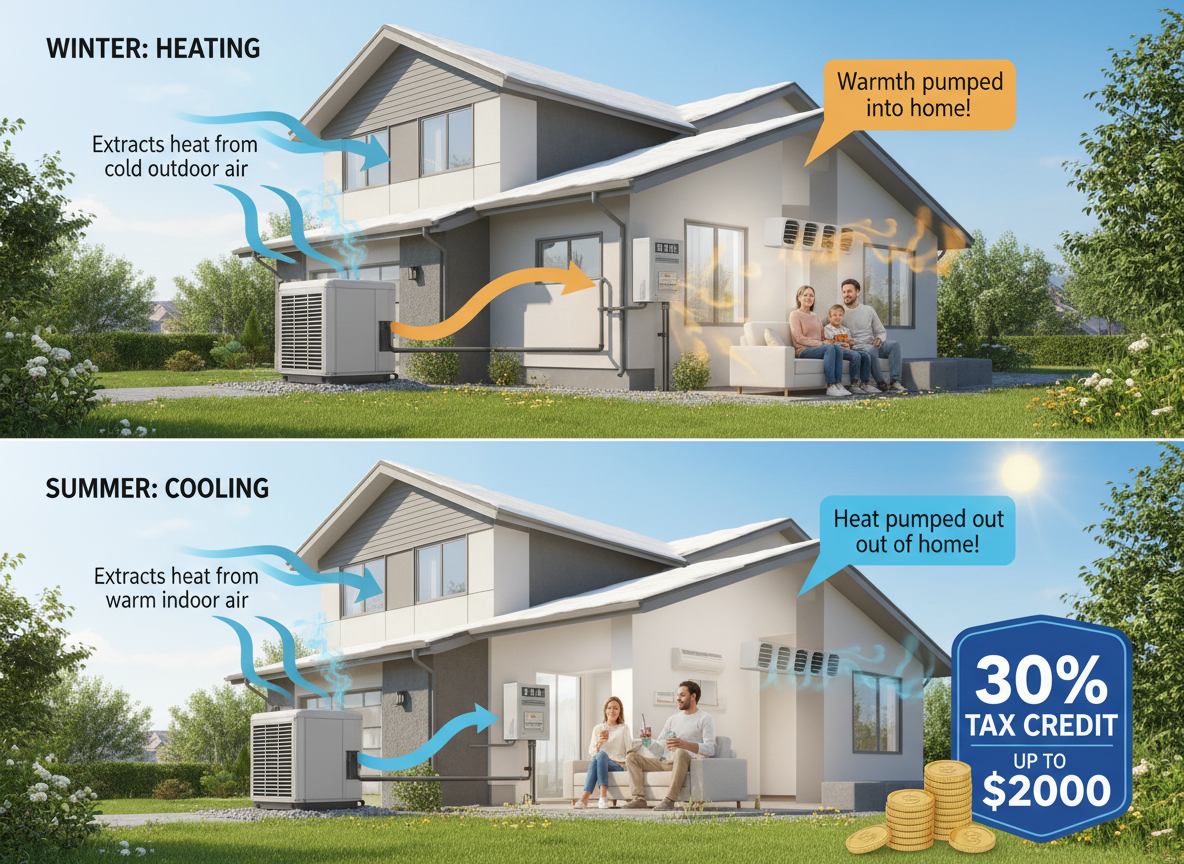
The New SEER2 Requirements
The last time you completed an AC replacement at your home you most likely considered the SEER of the unit before purchasing it. SEER is an acronym for “seasonal energy efficiency ratio”. The higher the SEER number the more efficient the AC unit. However, starting with January 1, 2023 there was a significant change to HVAC minimum efficiency standards across the United States. SEER will not be the standard anymore, every AC will now receive a SEER2 rating.
What is SEER Rating?
The minimum ratings allowed for equipment installed are enforced by the Department of Energy (DOE). In 2015, the Department of Energy implemented SEER as the standard of efficiency for central AC systems. SEER is the ratio of total cooling capacity during normal periods of operation divided by the total electric energy input over that same period. This ratio is represented by diving cooling BTU/h output by input wattage BTU/Wh. A higher SEER corresponds to less electricity required for a central ac to perform.
How is SEER2 Different?
SEER2 rating stands for Seasonal Energy Efficiency Ratio 2. It was developed in 2016 and implemented in 2023 onward by the US DOE. This update is to reflect improvements in the accuracy of testing as well as advancements made in HVAC technology. SEER2 uses the same equation as SEER but is calculated under different more harsh testing conditions. The current SEER testing conditions do not properly account for real world conditions of external static pressure such as from poorly designed ductwork. To calculate SEER2 a new testing procedure is used known as M1. There is 5 times increase in external static pressure (or pressure at the AC or heat pump vent). This change leads to more accurate efficiency ratings. As a result SEER2 ratings are about 5% lower than SEER ratings. This is because the blower motor has to work harder to push against the higher external pressure under the updated testing conditions. A 15 SEER unit is now a 14.3 SEER unit. Furthermore, equipment measured with the new SEER2 standards are significantly more efficient than those with a similar rating measured by SEER standards.
New Minimum SEER2 Requirements
The United States is divided into three different regions for new SEER2 compliance: North, Southwest, and Southeast. Since each region has its own climate and heating/cooling needs the new SEER2 requirements will impact each region to a different extent.
• North: Residential air conditioners must have a SEER2 rating of 13.4 (14 SEER). HVAC equipment built before January 1, 2023 can be sold and installed. HVAC units after that date are required to meet the new SEER2 Regulations.
• Southeast: Residential air conditioners below 45,000 BTUs must have a SEER2 rating of 14.3 (15 SEER). Air conditioners 45,000 BTUs - 65,000 BTUs must have a SEER2 rating of 13.8 (14.5 SEER). Any HVAC system cannot be sold or installed in the Southeast Region by January 1st if they do not meet SEER2 standards.
• Southwest: Residential air conditioners below 45,000 BTUs must have a SEER2 rating of 14.3 (15 SEER) and an EER2 of 11.7 (9.8 EER2 if SEER2 ≥ 15.2). Residential air conditioners 45,000 BTUs – 65,000 BTUs must have a SEER2 rating of 13.8 (14.5 SEER) and an EER2 of 11.2 (9.8 EER2 if SEER2 ≥ 15.2). Air conditioning systems can not be installed or sold if they do not meet the SEER2 requirements after January 1, 2023 in the Southwest Region.
In addition, heat pumps in any of the regions must meet 14.3 SEER2 (15.0 SEER) and 7.5 HSPF2 (8.8 HSPF) requirements.
How Do the New SEER2 Requirements Affect You?
With increasing temperatures, the number of homes in the United States that use air conditioning is bound to increase. An increase in SEER means an improvement in efficiency, consumer cost savings, and reduction of emissions. To meet the new standards set by the DOE, HVAC manufacturers will update and redesign components that go into the new HVAC systems. As a result, this will increase costs for consumers. However, although the HVAC system may cost more upfront for AC replacement, the long- term energy and efficiency savings will make up for it over time.
Contact LA Construction, Heating and Air
We understand it may be complicated to understand the new requirements and compare equipment that is why it is important to work with a licensed contractor. New modern HVAC equipment is much more efficient than older systems. New technology and smart home technology will continue to make HVAC equipment more efficient. If you have any questions or would like to schedule a free consultation for AC replacement, contact us online or give us a call today.






















.png)














